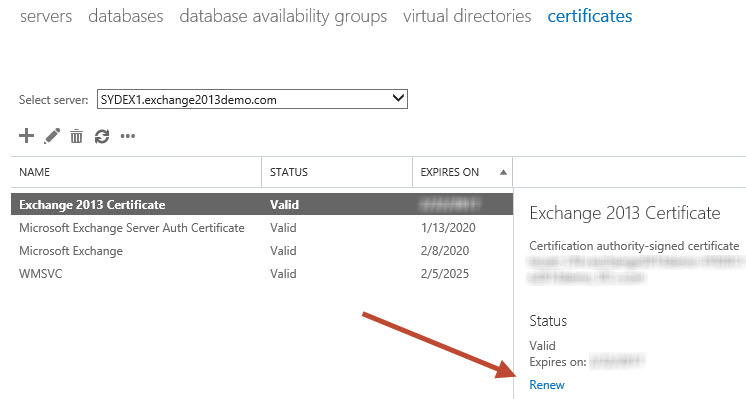


See that :444? That’s the backed port number

If it expires, you could start experiencing the following side effects: Well Sir or Madam, that is the certificate bound to the “Exchange Back End” IIS site and essentially secures all the internal communications. So why renew it? It doesn’t appear to be doing anything. Today, as more migrate to Exchange Online, these old 2010/2013 servers seem to be kept around longer during the migration, frozen in time and are now bumping into that 5 year certificate lifetime. They just worked – and as companies upgraded, new ones were created on the new version servers, mailboxes were moved and the old certificates disappeared as the servers were retired. When on-premises was king, you rarely saw any questions about these. They are valid for 5 years, then suddenly, they are not. The self-signed certificate with a friendly name of “Microsoft Exchange” that each server issues by itself to itself. This example assigns the IMAP, POP, IIS, and SMTP services to the certificate.Įnable-ExchangeCertificate -Server 'EXCH-H-868' -Services 'IMAP, POP, IIS, SMTP' -Thumbprint 'EDF57B5F9D81F1EC329BFB77ADD4465B426A40FB'You know the one I am taking about. Use Enable-ExchangeCertificate to assign services to the certificate. Import-ExchangeCertificate -FileData (]$(Get-Content -Path c:\certificates\xxxx.pfx -Encoding byte -ReadCount 0))Ĥ. In both cases, the certificates are delivered as files(e.g. After you have sent the certificate request to a CA, the CA issues a certificate or chain of certificates.ģ. Assign the services to the certificates - This might require the restart of IIS which affects the client connections, so do if after hours and one at a time. Export the certificate and import it on the other exchange servers if any. Set-Content -Path "c:\Certificates\xxxx.req" -Value $Data.FileData -Encoding ByteĢ. You can follow the below steps, Complete the request by selecting the new certificate. $Data = New-ExchangeCertificate -GenerateRequest -SubjectName "c=xx, o=xxx, cn=xxxx" –IncludeAcceptedDomains Running the following command where Country/Region = xx, Organization = xxx, and Common Name = xxxx: Use the New-ExchangeCertificate cmdlet to Generate Request for Third-Party Certificate Services, then save the request in a file using the Renewing your 3rd party certificate, you can use the Shell to achieve it and follow these steps:ġ. If anyone can tell me what would be the easiest way to get this certificate renewed, I would greatly appreiate it. CSR and going through the process from scratch. This seems the same thing as if I were requesting a new.

Renew a Certificate - asks me to save a file as a request (.req).
#Renew exchange 2010 certificate install#
New Exchange certificate - would use this option if it were a first time certificate install however, I am simply renewing.Īssign Services to a Certificate - seems to be an option if I already have an installed certificate and want to assign services to that certificate. Import Exchange certificate - wants me to import a. crt file from GoDaddy.Ĭan anyone help me with next steps? I see the following options available to me: Nothing has changed, so this option is most appealing to me. I use GoDaddy and was able to use the same CSR from when I originally created the certificate three years ago. Hi, I have to renew my 3rd party certificate on my Exchange 2010 server.


 0 kommentar(er)
0 kommentar(er)
